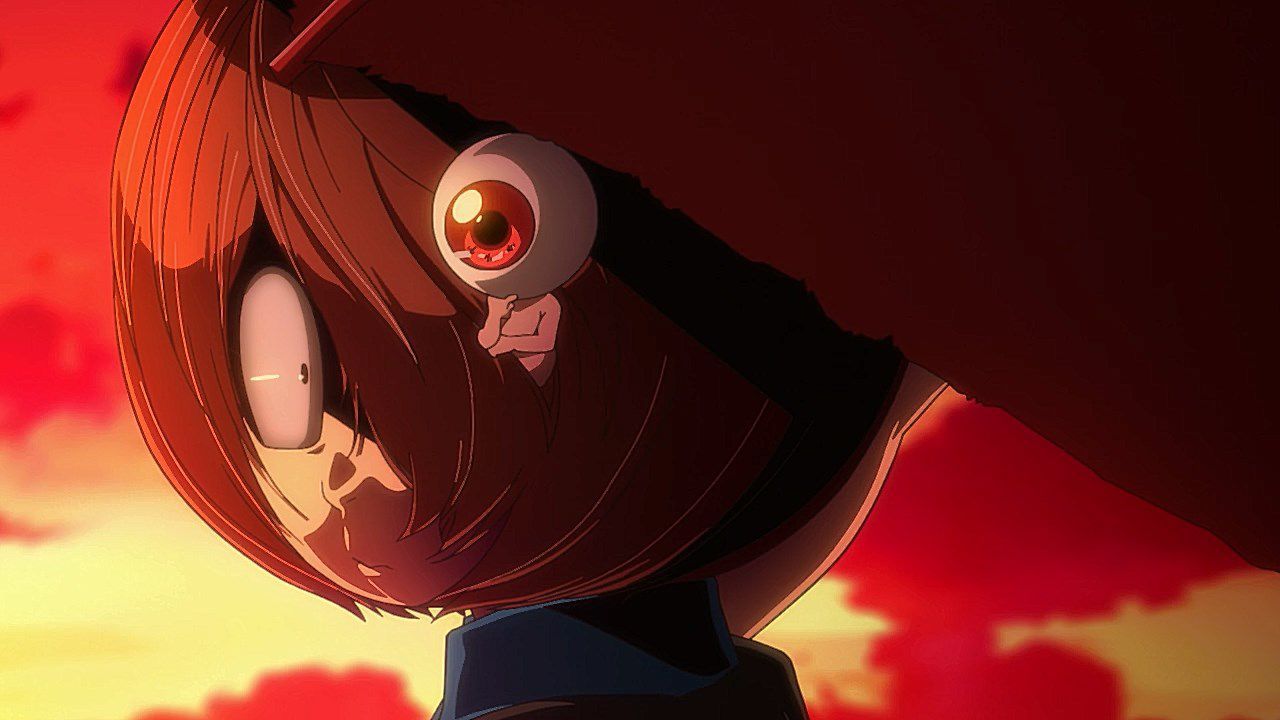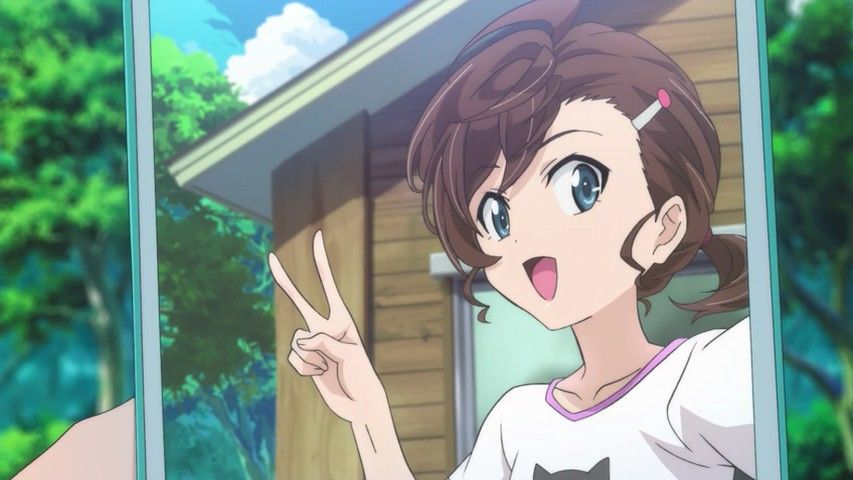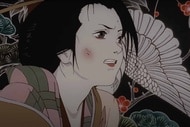Create a free profile to get unlimited access to exclusive videos, sweepstakes, and more!
Awesome anime you might've missed: GeGeGe no Kitaro

GeGeGe no Kitaro is a much-lauded horror manga series created by Shigeru Mizuki, but as beloved as Kitaro is in Japan (the manga has six different anime adaptations, essentially one version per decade), the character and his monster cronies haven't really made a huge splash in America. With Crunchyroll snatching the sub rights to the 2018 version of the Kitaro anime, American audiences are finally able to experience the wonderful weirdness of this world of yokai, the Japanese catch-all term for supernatural creatures.
Kitaro himself is the last surviving member of the Ghost Tribe, a powerful group of yokai charged with keeping the peace between yokai and humanity. If a yokai attacks a human, then it's Kitaro's job to deal with it. Joining him in battle are the catgirl Neko Musume, sand witch Sunakake Baba, a sentient wall named Nurikabe, a fabric demon called Ittan Momen, and other bizarre creatures from Japanese folklore.
Kitaro's father is technically dead, but his spirit lives on in the form of Medama-Oyaji, a creature with a single eyeball for a head and a tiny naked genderless body. He accompanies Kitaro by riding around in his son's empty eye socket, popping out now and then through Kitaro's mane of unkempt hair to offer some sage advice on how to defeat an enemy. He often feels like a surrogate for Mizuki himself, who was considered an expert on Japanese folklore and is often credited with reintroducing the concept of yokai to modern audiences through his manga. Without Kitaro, much of Japanese horror as we know it today would not exist.
Humans and yokai can't be friends until they canThe newest version of GeGeGe no Kitaro is unique in that for the first time, Kitaro has a human joining him on many of his adventures. Mana Inuyama is introduced in the very first episode as a kind, determined girl who only wants to help her friend. She's a teenager who becomes embedded into the world of yokai after her next-door neighbor pleads for her assistance in delivering a letter to the mysterious Kitaro. It's said that if you stick a note in a particular mailbox located down a certain dark alley, Kitaro will come to assist you. Skeptical of the claim, but still wishing to help her friend out, Mana braves the close confines of the alley, delivers the letter, and eventually meets Kitaro.
At first, Kitaro refuses to consider Mana an ally. After all, she's just a lowly human with no real powers of her own. How can she be of any use? Throughout the series, however, Mana proves her worthiness time and time again. Some evil yokai can only be banished if a human utters a specific incantation, for instance, and Mana is instrumental in helping Kitaro navigate through modern Tokyo. Kitaro has a difficult time wrapping his head around technology like smartphones, and so Mana is there to help. Many of the episodes feature Mana and her classmates, and in many ways, she's the show's co-protagonist. This is the first time in a Kitaro anime where there is an audience surrogate, a human who is experiencing the yokai realm for the first time, and with her presence, the show is able to address some core issues that modern teenagers have to face.
Spooky tales for the social media savvy
Ghost stories, in general, carry a timeless quality to them, but this iteration of Kitaro is firmly entrenched in the now. The very first episode of the new series depicts the dire consequences when an ignorant Youtuber destroys an ancient seal for the lulz and unleashes an evil force that turns hapless victims into trees. It's seriously tempting (and fun!) to imagine that this episode was inspired by Logan Paul. His video of a dead body in Aokigahara (arguably better known as the Suicide Forest), as well as his racist interactions with innocent bystanders in Tokyo, sparked outrage throughout Japan. Aokigahara is also known as the Sea of Trees, so is it any wonder that Paul's anime equivalent is punished by being turned into a freaking tree?
This first episode sets the tone for the rest of the series. Everything that plagues the modern world is fair game. A washed-up comedian considers ending it all before he stumbles upon a water demon singing a bizarrely-catchy little ditty. In the best depiction of cultural appropriation ever seen in an anime series, the comedian uses the creature's song to help revitalize his act. A video of the comic performing the song goes mega-viral, and soon he's relevant again, playing his schtick on talk shows, variety programs, and on-stage. He's selling out venues all because of one stolen song, and soon enough the creature discovers what the comedian has done. The beast then delivers an ultimatum: if you ever perform my song again, I'll kill you. The comedian tries to adhere to his promise, but the temptation proves too high. He's straight-up murdered on stage by the demon as his adoring audience watches. Great kid's stuff!
A love letter to its creator
One particular story arc shows Mana bringing her yokai friends to Sakaiminato, a seaside city which is home to her favorite relatives. A fun outing with family starts to turn deadly when a gigantic monster suddenly appears to wreak havoc throughout the city, destroying buildings and threatening to kill everyone. Kitaro eventually defeats the monster, and the townspeople pay tribute to him and his friends by putting up statues of all of them throughout the town. Sakaiminato is a real city and is the birthplace of Kitaro's creator. The city really does have sculptures depicting all of Mizuki's characters, and in a heartfelt PSA at the end of the episode, Mana encourages viewers to visit the city and see the statues.
Mizuki's service as an Imperial soldier during WWII is an obvious inspiration for another episode. Mysterious red flowers suddenly appear at Mana's great-aunt's house. Tracing the origin of the flowers takes Mana, Kitaro, and company to a "southern island" where the echos of the war that occurred over 70 years ago quite literally haunt the landscape. Mizuki himself became disillusioned with war as he witnessed many atrocities while stationed in New Guinea, and the experience turns him into a life-long pacifist. Mana mentions that she hasn't really learned about WWII in school, so in a thoughtful tribute to Mizuki, she turns her adventure into her summer research project for school.
The theme song is a banger
This newest iteration of Kitaro still retains the classic theme song, in use since the first adaptation aired back in the '60s, and it's... surprisingly good?
Perhaps "good" isn't the correct name for it, but the song's an insidious earworm that will haunt you in your sleep, much like the yokai that the show depicts.Be warned. Binge-watching GeGeGe no Kitaro might make you begin to believe that evil spirits are everywhere, biding their time until an unsuspecting human wanders into their sights.
The views and opinions expressed in this article are the author's, and do not necessarily reflect those of SYFY WIRE, SYFY, or NBC Universal.



























